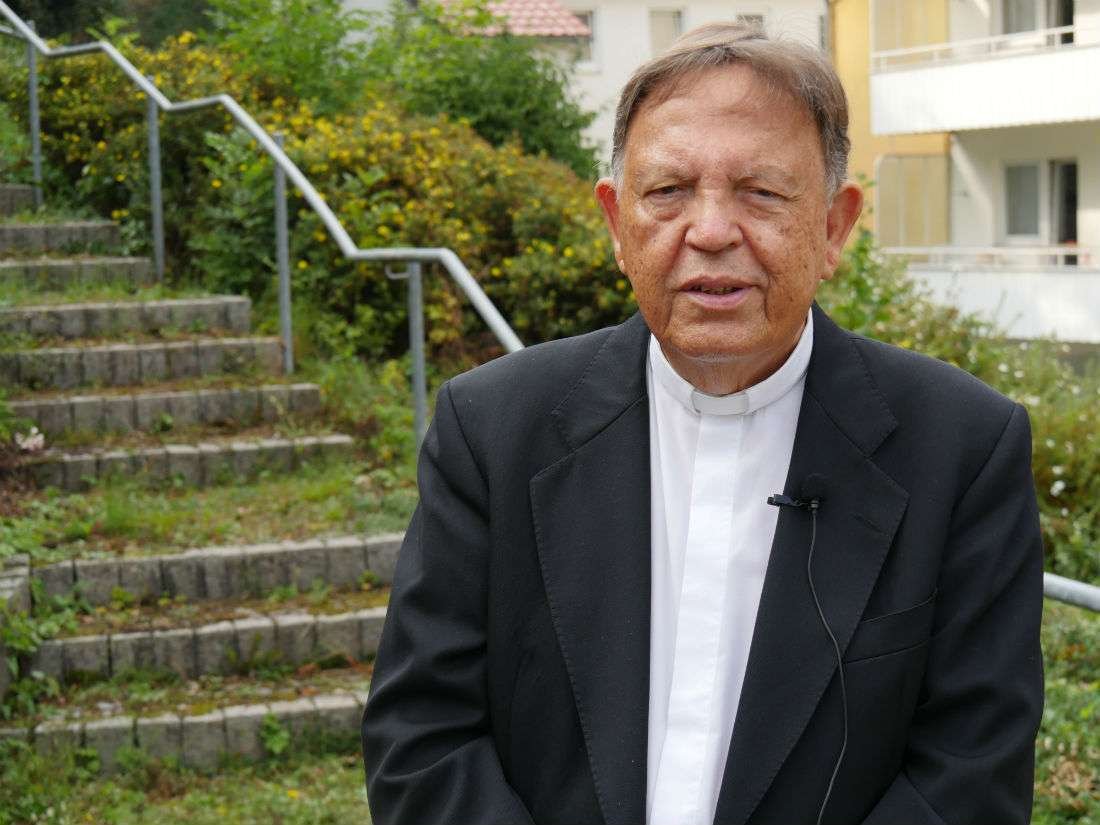
In today’s Gospel, Palm Sunday, Christ’s passion is told. A character appears when Christ, with the cross on his back, is on his way to the place of the crucifixion called Golgotha, which means the place of the skull. He carries the cross behind Christ. He is a peasant named Simon of Cyrene and he was forced to carry the cross.
As you know, Matthew writes his gospel for Christians of Jewish origin. That Jewish people through their leaders reject Christ. Matthew wants, above all, to make visible the power and authority of Christ. Jesus, the Son of God, knows what is going to happen to him and he accepts it, and he also accepts the events that occur but he foresees them. The Father has given him his own power. Christ, with his passion, death and resurrection, inaugurates a new time, the kingdom of God, the kingdom of love, already announced in the beatitudes.
The story of the Last Supper announces Judas’ betrayal and Peter’s denial. Let’s take a good look. This last supper is accompanied by these two signs. And, like everyone who suffers, Christ feels the need for the presence of his disciples, of his friends, but these on the Mount of Olives are asleep. When he is arrested he teaches a new lesson: he refuses to use the force and power that the Father has given him.
The story of Peter’s denial reminds us that we can all deny, recognize, that humiliated Christ.
In the scene of the Roman trial, Matthew adds the intervention of Pilate’s wife recognizing that Jesus is just, he is innocent. Pilate washes his hands and the people take full responsibility for this death. Jesus dies on the cross abandoned by all the disciples except one, John. But his death is a resurrection. The earthquake that occurs in their atonement is an image of the end of time. From that moment the saints will rise and enter the heavenly Jerusalem, while the soldiers recognize that Jesus is the Son of God.
Christ with his life, and on the cross, reveals to us a profoundly human Christ. When he seeks, we will say, affection from his disciples, especially in his agony, when Christ bears our suffering and pain on the cross, Christ is the new Moses who in the Sermon on the Mount and in the Passover transmits the new law of love, which consists in being perfect as our heavenly Father is perfect. It is the perfection of love, not perfectionism. It reduces the old law to its original purity, it wants mercy and not sacrifice.
The Church is the Church of love, the Church of forgiveness and the Church of mercy. We cannot forget this. Today we are living a pandemic with its fountain of tears. So many sick and so many dead. But in the midst of the pain and suffering of so many people, the face of the Risen Christ is appearing in the hearts of so many heroes, men and women, in the world of health, in the civil world, alongside those sick people who also represent the deformed face of Christ.
Seriously and very seriously ill people form the passion of Christ and are expressing how in the shed blood of Christ, that martyral love for so many, many human beings, beyond religion, far beyond cultures or social situations Christ dies for all of us. And it looks like he’s not asking us for anything in return. All He asks of us is that we love Him and that we love our neighbour on the cross, which is love, because we know that at the heart of all suffering is love, the tree of life has been planted.
Faith and hope are opening a gallery with their end of light on the hard rock of this pandemic that I hope will not be the hard rock of our hearts.










!["El mundo puede cambiar desde el corazón"
(Papa Francisco, Encíclica Dilexit Nos)
"El Corazón de Cristo es éxtasis, es salida, es donación, es encuentro. En él nos volvemos capaces de relacionarnos de un modo sano y feliz, y de construir en este mundo el Reino de amor y de justicia. Nuestro corazón unido al de Cristo es capaz de este milagro social.
Tomar en serio el corazón tiene consecuencias sociales. Como enseña el Concilio Vaticano II, «tenemos todos que cambiar nuestros corazones, con los ojos puestos en el orbe entero y en aquellos trabajos que todos juntos podemos llevar a cabo para que nuestra generación mejore». Porque «los desequilibrios que fatigan al mundo moderno están conectados con ese otro desequilibrio fundamental que hunde sus raíces en el corazón humano». [21] Ante los dramas del mundo, el Concilio invita a volver al corazón, explicando que el ser humano «por su interioridad es, en efecto, superior al universo entero; a esta profunda interioridad retorna cuando entra dentro de su corazón, donde Dios le aguarda, escrutador de los corazones (cf. 1 S 16,7; Jr 17,10), y donde él personalmente, bajo la mirada de Dios, decide su propio destino».
Esto no significa confiar excesivamente en nosotros mismos. Tengamos cuidado: advirtamos que nuestro corazón no es autosuficiente; es frágil y está herido. Tiene una dignidad ontológica, pero al mismo tiempo debe buscar una vida más digna. Dice también el Concilio Vaticano II que «el fermento evangélico ha despertado y despierta en el corazón del hombre esta irrefrenable exigencia de la dignidad», aunque para vivir conforme a esa dignidad no nos basta conocer el Evangelio ni cumplir mecánicamente lo que nos manda. Necesitamos el auxilio del amor divino. Acudamos al Corazón de Cristo, ese centro de su ser, que es un horno ardiente de amor divino y humano y es la mayor plenitud que puede alcanzar lo humano. Allí, en ese Corazón es donde nos reconocemos finalmente a nosotros mismos y aprendemos a amar."](https://www.idente.org/wp-content/plugins/instagram-feed/img/placeholder.png)